
One stop on my recent trip to Europe was Venice. Visiting my parents (who live in nearby Vicenza) on my way to attend the Ecocity World Summit in Istanbul, I felt like I had arrived in the ultimate ecocity before ever getting to the conference. I’m of course aware that Venice is a unique city with a good share of its own problems. These range from garbage and sewage issues due to the volume of tourists each year, to flooding caused by a combination of natural cycles, a sinking foundation, and rising sea levels due to climate change.
However, with every step I took through the streets and alleys of this pedestrian paradise I was struck by how much of its urban design serves as an example that ecocities aren’t some kind of Utopia but have in fact been in existence for centuries. Follow me on a trip to the past, present, and perhaps, the future.
Venice (Italian: Venezia, IPA: [veˈnεttsia], Venetian: Venesia) is a city in northern Italy, the capital of the region Veneto. The population estimate of 272,000 inhabitants includes the population of the whole Comune of Venezia; around 60,000 in the historic city of Venice (Centro storico). Venice has been known as the “La Dominante”, “Serenissima”, “Queen of the Adriatic”, “City of Water”, “City of Bridges”, “City of Canals” and “The City of Light”. Luigi Barzini, writing in The New York Times, described it as “undoubtedly the most beautiful city built by man“. (Wikipedia)
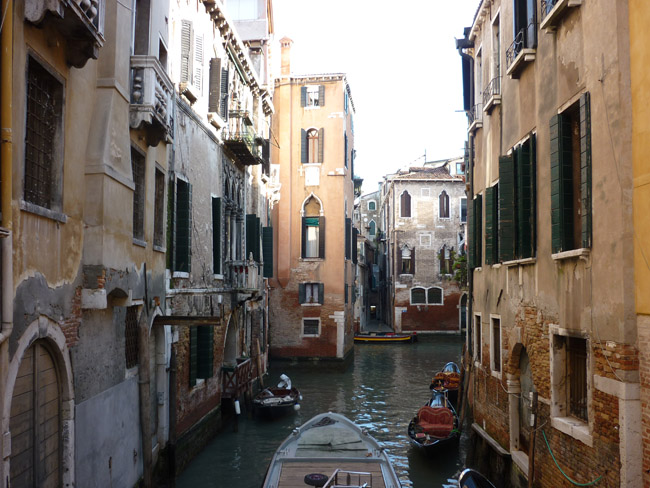
The first thing one encounters upon approaching Venice is the irrevocable reality of having to give up one’s car. It’s like checking your coat at the door…

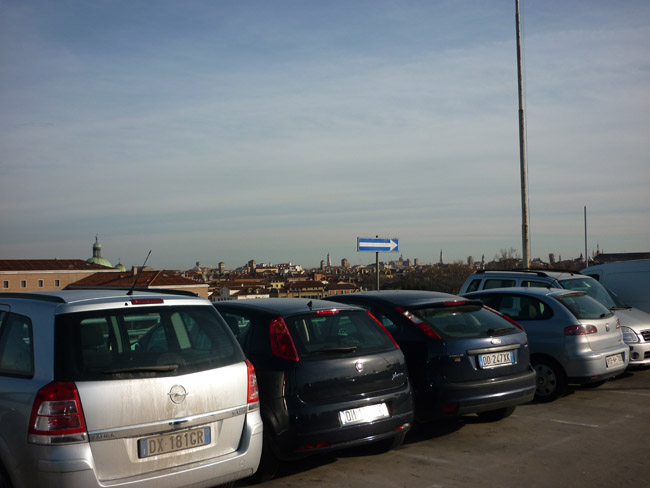
“Venice is Europe’s largest urban car free area, unique in Europe in remaining a sizable functioning city in the 21st century entirely without motorcars or trucks.” (Wikipedia)
Once you walk across modern Ponte della Costituzione into historic Venice, your entire field of perception changes…
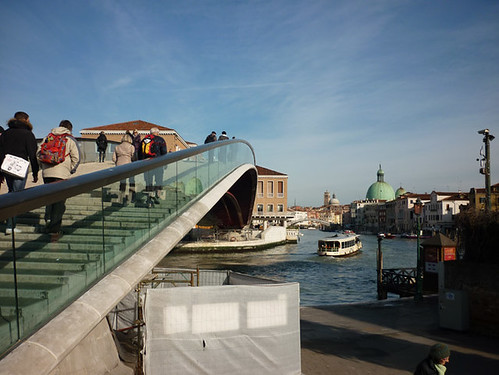

Whether you look down the alleys…
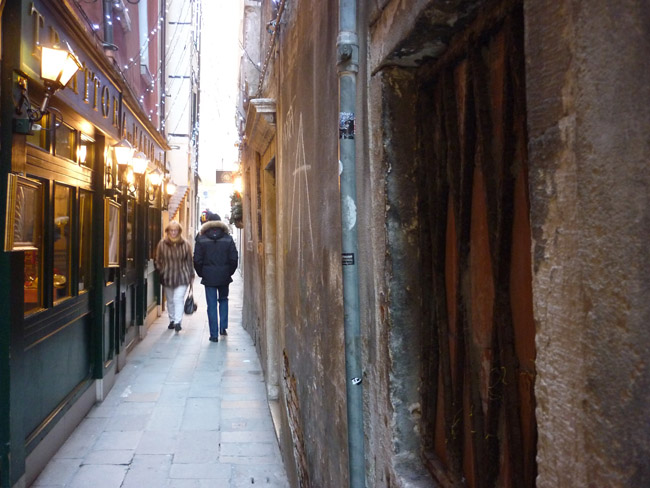
into the canals…
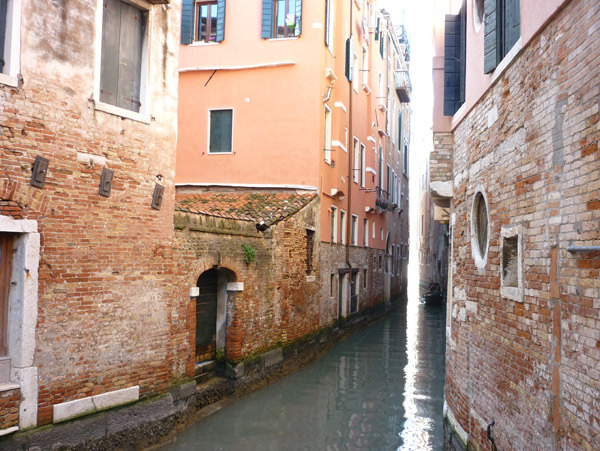
through the tunnels…
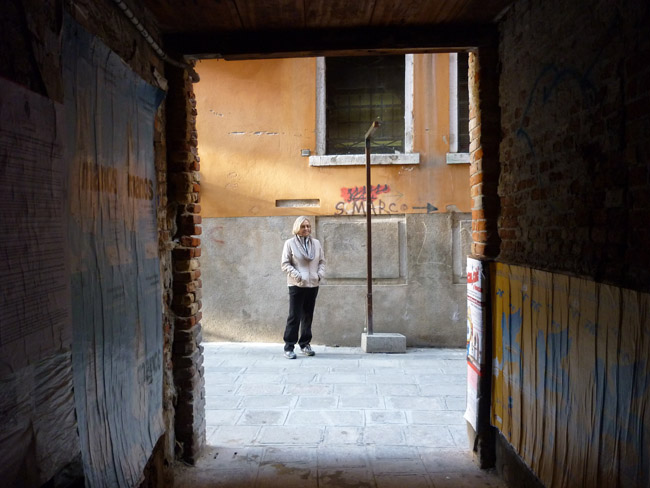
or up in the air…
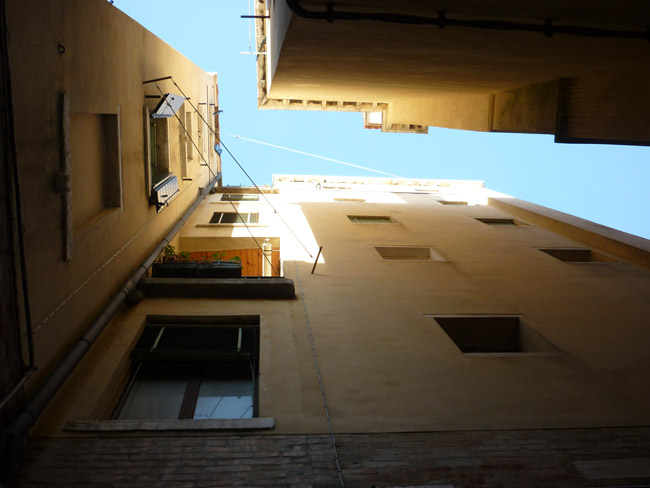
This town is made for the SENSES!
It is quite amazing what happens to your entire sensory system when not only you but everyone else experiences life away from the car.
I hear the sounds of footsteps and conversation…


and I smell the scents of fresh produce and bread…
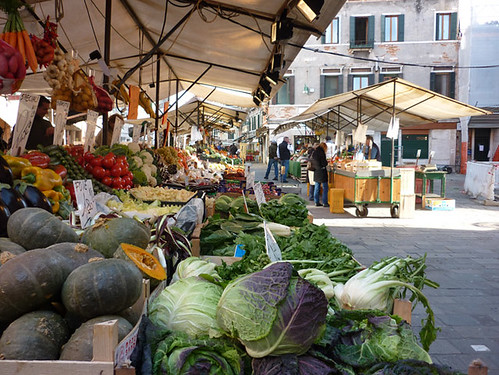
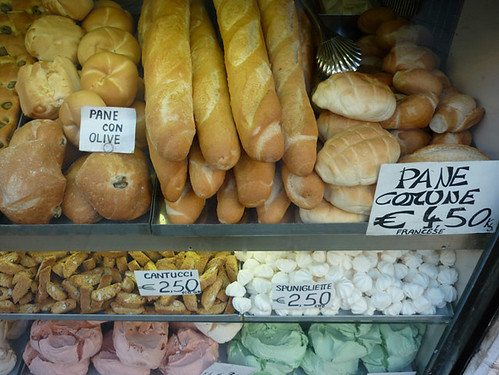
I see and touch endless colors and shapes
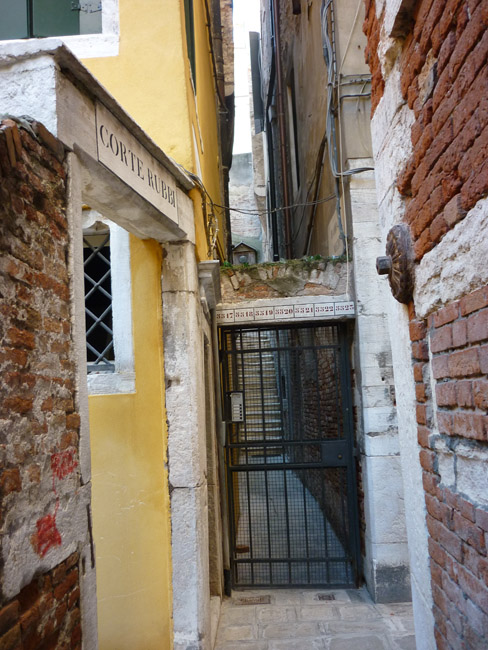

One thing I noticed was how many people had their laundry hanging out to dry. Obviously, this is not exclusive to Venice but when you ask yourself how Americans can get such a high per capita carbon footprint compared to Europeans, it’s those little things that add up. Why waste money and energy on wasteful machines when the great dryer in the sky is right there?
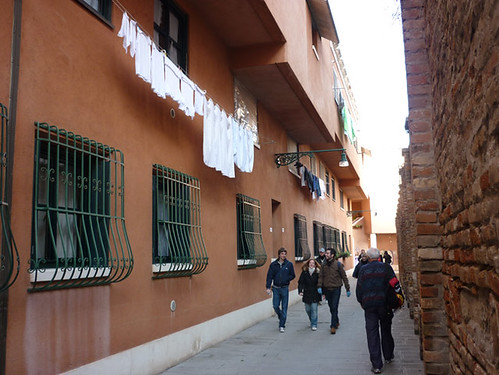
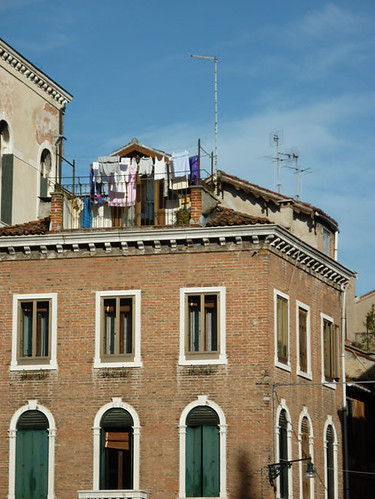
(btw, if you’re one of those Americans who isn’t grossed out by these photos, check out Project Laundry List.)
Buildings are high occupancy and high density in true ecocity fashion…
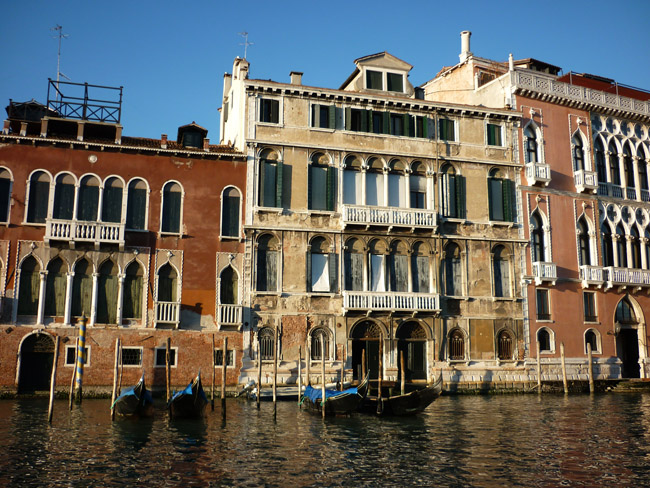
because you know, density is not a curse word when you include beauty, imagination and mother nature in your design…


Parking is for lovers…
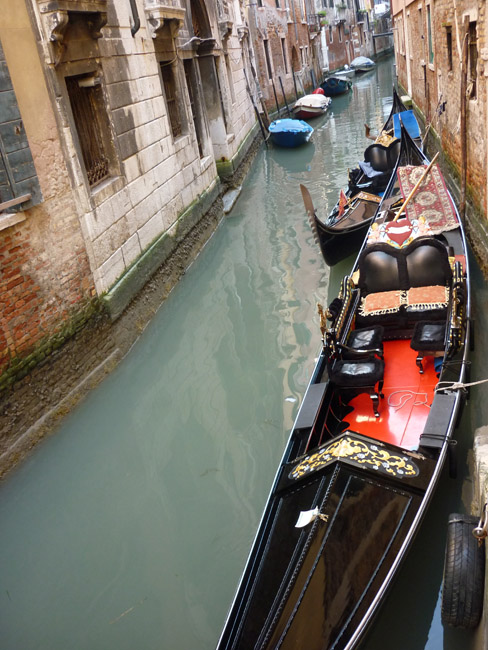
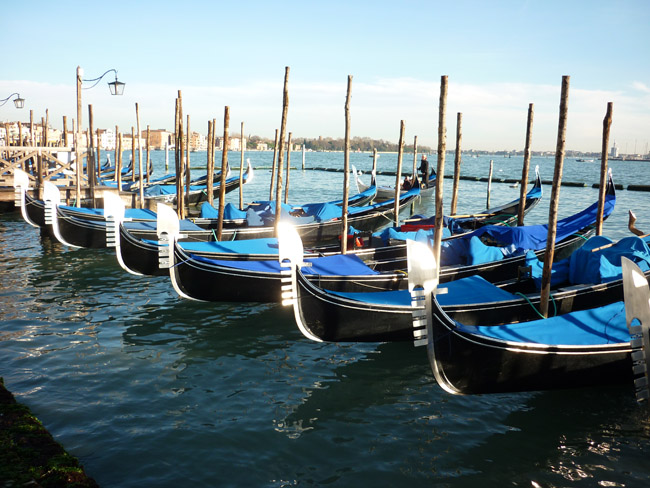
Public transit is for movers…


and even waste disposal has its appeal…
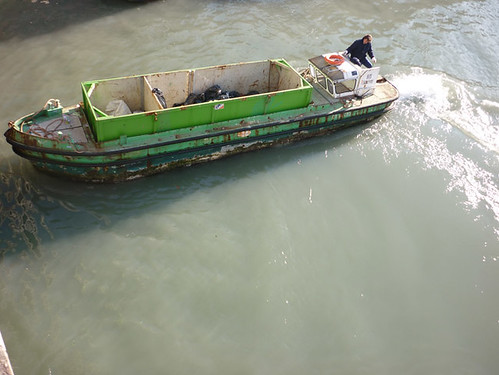
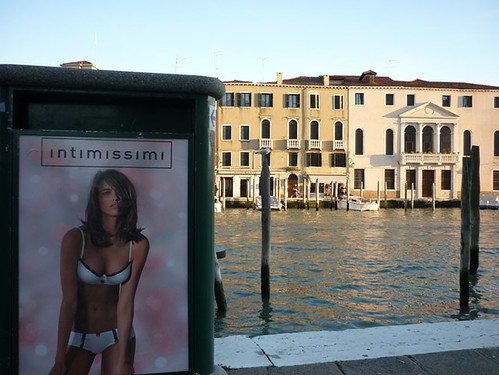
The locals are full of grace while the tourists aren’t…
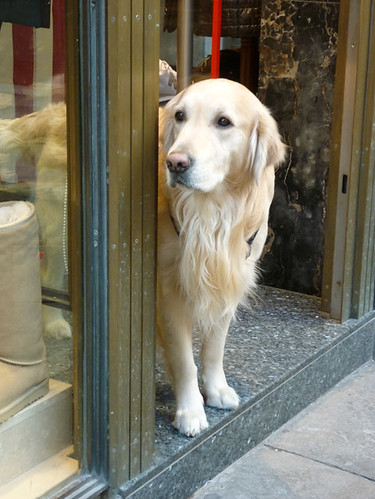
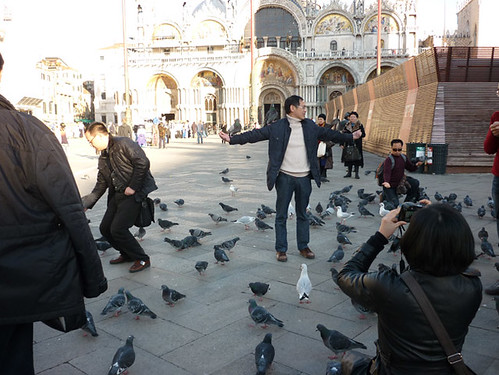
Venetians are a modern people…

who can dream big…

yet remain true to their roots where it makes sense…

I know there’s only one Venice (sorry CA & FL), and some of the particular features of this city are neither possible nor desirable to recreate in other places. However, even without the canals this is a great model that could serve city planners everywhere as they envision the 21st century city in which residents tread with a low carbon footprint.
Here are just a few key features of Venice that should be part of any modern urban plan:
- Urban villages that are closed off to cars except a few key transportation routes.
- Multi-occupancy buildings and architecture that are aesthetically pleasing, with rooftop gardens and other integrated natural elements that inspire a sense of belonging and community.
- Access by proximity: all essential services are within walking (or biking) distance.
- Open spaces interspersed with high density residential and commercial corridors.
While the canals in Venice serve not only as transit routes but as natural green spaces that enhance the quality of living in densely populated cities, there are other ways to create these green zones. In fact, most urban areas have natural waterways and green zones but they’ve been paved over. Projects like Cheonggyecheon River restoration in downtown Seoul, South Korea, or the Cordornices Creek Daylighting Project in Berkeley-Albany show how even the most paved over cities can become more “Venetian” if only we unveil and honor the natural ecosystem they were built on. And since continued urban sprawl is not an option for the future of mankind, we may as well rediscover the joy and beauty of city life.
You may say I’m a dreamer, but I’m not the only one…
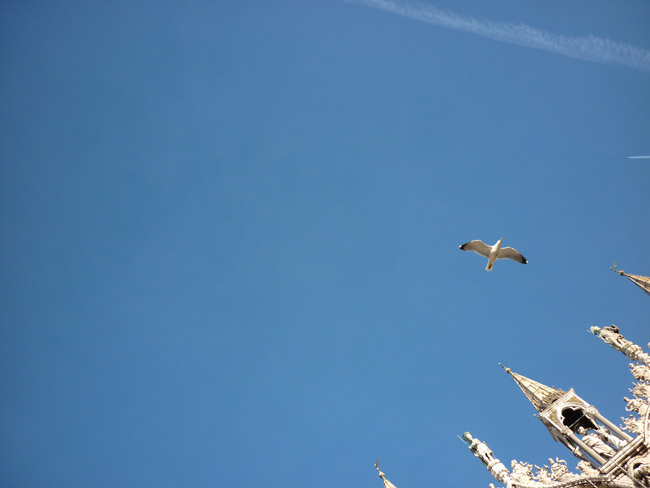
o~O~o~O~o~O~o~O~o~O~o~O~o~O~o~O~o~O~o

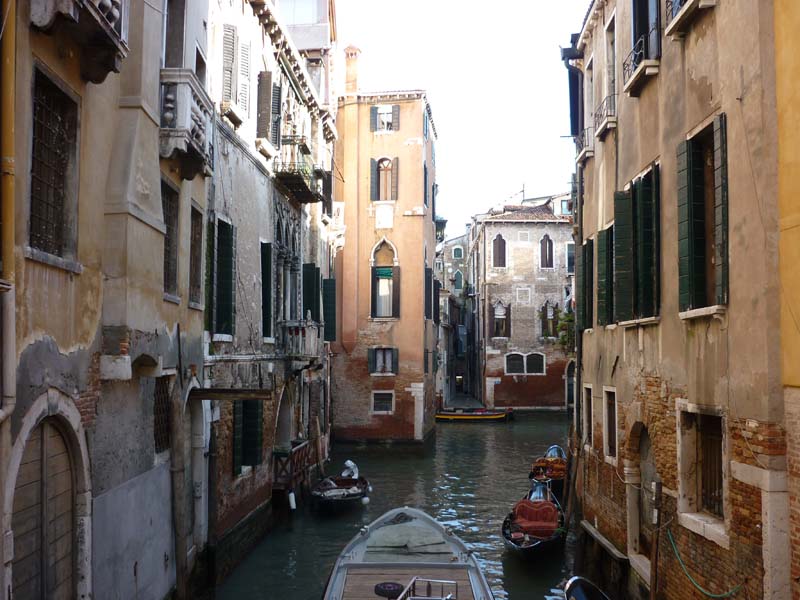





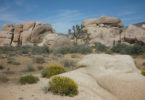
Great post! Having grown up in Australia there are shamefully few examples of well-planned, high-density living – the opposite attitude seems to prevail, developing everything but the most dense, inaccessible or rich environmental areas.
I think it’s tempting in countries as vast as Australia and the United States to sprawl out. Europeans would probably have done the same thing had they had as much open land to begin with. And just a couple of decades ago it probably made perfect sense, but knowing what we know now about the consequences of continued sprawl I think people and planners even in these large countries are starting to realize that they have to change their ways if they want to compete (survive) in a world of shrinking resources. Thanks for stopping by, David!
Loved this post! Never been to Venice. And actually I love to avoid major tourists destinations. 🙂 So maybe I will never visit Venice. But I was really enjoyable to read your perception of the city.
I have a question. I understand that Venice is a city on water. Is it easy to breath there? I mean because of high humidity the air might be not very healthy as in St. St. Petersburg, Russia, for example.
it was quite lovely when I was there in December. I think summer time can be bad, both for tourists and humidity, so I recommend going in the winter, there weren’t many tourists and it was wonderful!
Hi Sven!
Your list of what “works” in Venice (and what should be adopted elsewhere), reminded me of the book “A Pattern Language” by Christopher Alexander (& Ishikawa, Silverstein). I think it’s time I revisit the pages…
I had a similar experience in Stolkholm a few years back (Gamla Stan). Of course it’s only a small part of the big city, but there were few cars, tightly packed beautiful buildings, and lots of examples of creative gardening that it just felt magical.
Hi Kirsten, I haven’t read A Pattern Language, but I’ll check it out. The Scandinavians in general seem to be very resourceful and determined when it comes to implementing sensible ways to live. Did you check out the video about bike lanes in Copenhagen? It’s really cool, watch http://www.streetfilms.org/copenhagen%E2%80%99s-climate-friendly-bike-friendly-streets/
Oh you’ll love the book, I think! I borrowed if from the library a few times, but there are always holds on the copies they have that I finally just broke down and bought myself a copy. I’ll try to remember to bring it with me next time I see you or Deb.
Love that short film! All those folks cycling in coldish weather is impressive – I need to modify my bike a bit to be more comfortable – Alameda is such an easy place to ride since it’s so flat! I really should be riding more often. Thanks for the inspiration 🙂
that would be cool.
Yup, those northern Europeans are pretty hard-core, but you’ve got those genes, so I know a little bit of weather isn’t going to hold you back, right? Come to think of it, even the southern European cyclists I encountered didn’t seem to mind the cold and rain 🙂
[…] Register, urban planning Some of you may be familiar with my diaries about ecocities. From Venice and Istanbul to West Oakland, I’ve written about urban areas within an ecocity context, and […]
[…] follow naturally. And it sure helps to have visual support when you’re trying to explain why Venice and Cinqueterre are such great models of sustainable urban […]
[…] posted at A World of Words All photos by Sven […]
[…] a dreamer, but I'm not the only one… o~O~o~O~o~O~o~O~o~O~o~O~o~O~o~O~o~O~o Originally posted at A World of Words All photos by Sven […]